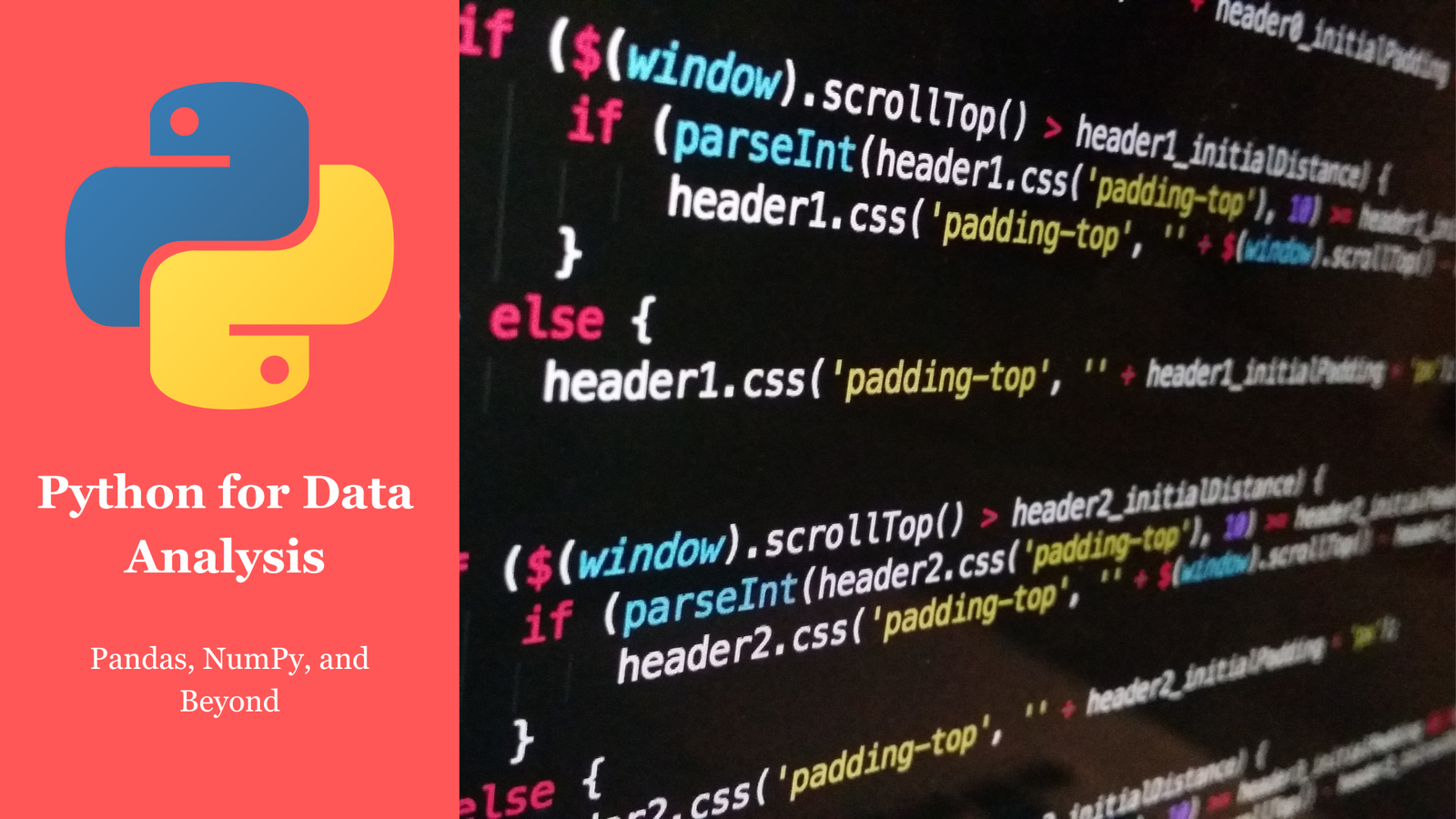Introduction
Data analysis is the cornerstone of decision-making in today’s data-driven world. Python, with its powerful libraries like pandas and NumPy, has become the go-to language for processing, cleaning, and analyzing data efficiently.
This guide explores Python’s capabilities for data analysis, focusing on pandas and NumPy, and provides hands-on examples to help you manipulate and analyze data effectively. By the end, you’ll have a strong foundation to tackle real-world data challenges.
What is Data Analysis?
Data analysis involves examining, cleaning, and modeling data to extract useful insights and support decision-making.
Why Data Analysis Matters:
1. Helps uncover patterns and trends.
2. Supports data-driven decision-making.
3. Identifies outliers and anomalies.
4. Prepares data for machine learning or predictive modeling.
Key Python Libraries for Data Analysis
1. NumPy:
Provides support for large, multi-dimensional arrays and mathematical functions.
pip install numpy2. Pandas:
Built on NumPy, it simplifies data manipulation and analysis with DataFrame and Series objects.
pip install pandas3. SciPy:
Extends NumPy with additional scientific computing functionalities.
pip install scipy4. Matplotlib and Seaborn:
For data visualization and plotting.
pip install matplotlib seabornSetting Up Your Environment
1. Install Python 3.7+ from python.org.
2. Install the required libraries:
pip install numpy pandas matplotlib seabornGetting Started with Pandas
1. Loading Data
import pandas as pd
# Load CSV file
data = pd.read_csv("sample.csv")
print(data.head())2. Exploring Data
# View dataset information
print(data.info())
# Summary statistics
print(data.describe())Key Pandas Operations
1. Selecting Columns and Rows:
# Select a column
print(data["ColumnName"])
# Select multiple columns
print(data[["Column1", "Column2"]])
# Select rows by index
print(data.iloc[0:5]) # First 5 rows2. Filtering Data:
# Filter rows based on a condition
filtered_data = data[data["ColumnName"] > 50]3. Adding and Removing Columns:
# Add a new column
data["NewColumn"] = data["Column1"] + data["Column2"]
# Drop a column
data.drop("ColumnName", axis=1, inplace=True)4. Sorting Data:
# Sort by a column
sorted_data = data.sort_values(by="ColumnName", ascending=False)Advanced Pandas Techniques
1. Group Operations:
grouped_data = data.groupby("CategoryColumn")["ValueColumn"].mean()
print(grouped_data)2. Pivot Tables:
pivot = data.pivot_table(values="ValueColumn", index="RowCategory", columns="ColumnCategory", aggfunc="sum")
print(pivot)3. Handling Missing Data:
# Check for missing values
print(data.isnull().sum())
# Fill missing values
data["ColumnName"].fillna(data["ColumnName"].mean(), inplace=True)
# Drop rows with missing values
data.dropna(inplace=True)4. Merging and Joining:
# Merge two DataFrames
merged_data = pd.merge(df1, df2, on="KeyColumn")Getting Started with NumPy
1. Creating Arrays:
import numpy as np
# Create an array
arr = np.array([1, 2, 3, 4, 5])
print(arr)
# Create a 2D array
matrix = np.array([[1, 2], [3, 4]])
print(matrix)2. Array Operations:
# Arithmetic operations
arr = np.array([1, 2, 3, 4])
print(arr + 5) # Add 5 to each element
# Matrix multiplication
result = np.dot(matrix1, matrix2)3. Array Slicing:
arr = np.array([10, 20, 30, 40, 50])
print(arr[1:4]) # Output: [20 30 40]Visualizing Data
1. Line Plot with Matplotlib:
import matplotlib.pyplot as plt
data = [1, 2, 3, 4, 5]
plt.plot(data)
plt.title("Line Plot")
plt.show()2. Histogram with Pandas:
data["ColumnName"].plot(kind="hist", title="Histogram")
plt.show()3. Heatmap with Seaborn:
import seaborn as sns
correlation_matrix = data.corr()
sns.heatmap(correlation_matrix, annot=True, cmap="coolwarm")
plt.title("Correlation Heatmap")
plt.show()Best Practices for Data Analysis
1. Clean Data Thoroughly:
Handle missing values, duplicates, and outliers.
2. Understand the Data:
Perform exploratory data analysis (EDA) to identify patterns and relationships.
3. Use Vectorized Operations:
Use NumPy or Pandas for efficient computations over loops.
4. Visualize Insights:
Present findings using clear and intuitive visualizations.
5. Document Your Process:
Keep your code modular and well-commented for reproducibility.
FAQs
1. What is the difference between NumPy and Pandas?
NumPy provides efficient array operations, while Pandas is designed for tabular data manipulation.
2. Can Pandas handle large datasets?
Pandas can handle large datasets but may require optimization or alternatives like Dask for extremely large data.
3. What is the purpose of pivot tables in Pandas?
Pivot tables summarize data by grouping and aggregating values.
4. How do I handle missing data in Pandas?
Use methods like fillna() to fill missing values or dropna() to remove rows with missing data.
5. Is NumPy faster than Python lists?
Yes, NumPy arrays are optimized for performance and are faster than Python lists.
6. What is vectorization in NumPy?
Vectorization involves applying operations to entire arrays without explicit loops.
7. Can Pandas work with databases?
Yes, Pandas can connect to databases using libraries like SQLAlchemy.
8. What is the difference between merge and join in Pandas?
merge combines DataFrames based on keys, while join aligns DataFrames on their index.
9. How do I visualize data distributions in Pandas?
Use plot(kind=”hist”) or Seaborn’s sns.histplot().
10. What are the alternatives to Pandas for big data?
Alternatives include Dask, PySpark, and Vaex for distributed data processing.
Conclusion
Python, with its robust libraries like Pandas and NumPy, provides an unparalleled toolkit for data analysis. By mastering data manipulation, cleaning, and visualization, you can uncover insights and make data-driven decisions effectively. Whether you’re analyzing datasets for research, business, or personal projects, Python empowers you to handle data challenges with confidence.

